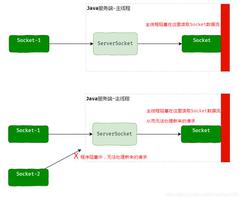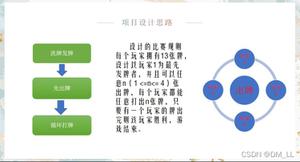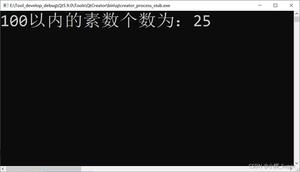20145120 《Java程序设计》实验二实验报告

实验名称:Java面向对象程序设计
实验目的与要求:
- 初步掌握单元测试和TDD
- 理解并掌握面向对象三要素:封装、继承、多态
- 初步掌握UML建模
- 熟悉S.O.L.I.D原则
- 了解设计模式
实验内容、步骤
| 步骤 | 耗时 | 百分比 |
|---|---|---|
| 需求分析 | 1 | 10% |
| 设计 | 1 | 10% |
| 代码实现 | 3 | 30% |
| 测试 | 3 | 30% |
| 分析总结 | 2 | 20% |
代码调试过程
伪代码
ComplexNumber() 构造函数,将实部,虚部都置为0
ComplexNumber(double r, double i) 构造函数,创建复数对象的同时完成复数的实部,虚部的初始化
GetRealPart() 获取实部
GetImaginaryPart() 获取虚部
SetRealPart(double d) 设置实部
SetImaginaryPart(double d) 设置虚部
ComplexAdd(ComplexNumber c) 复数相加
ComplexAdd(double c) 复数相加
ComplexMinus(ComplexNumber c) 复数相减
ComplexMinus(double c) 复数相减
ComplexMulti(ComplexNumber c) 复数相乘
ComplexMulti(double c) 复数相乘
toString() 把当前复数对象的实部,虚部组合成a+bi的字符串形式
(感觉老师给的已经很完善了,直接借用)
产品代码
比着书上潜水艇,role,剑士法师什么的写出来了
package experiment;/**
* Created by lenovo on 2016/4/12.
*/
public class ComplexNumber{
private double real;
private double imag;
public ComplexNumber() {
this.real=0;
this.imag=0;
}
public ComplexNumber(double r,double i){
this.real = r;
this.imag = i;
}
public double getReal() {
return real;
}
public void setReal(double real) {
this.real = real;
}
public double getImag() {
return imag;
}
public void setImag(double imag) {
this.imag = imag;
}
public ComplexNumber ComplexAdd(ComplexNumber c) {
double r = this.real + c.real;
double i = this.imag + c.imag;
return new ComplexNumber(r,i);
}
public ComplexNumber ComplexAdd(double c) {
double r = this.real + c;
double i = this.imag;
return new ComplexNumber(r,i);
}
public ComplexNumber ComplexMinus(ComplexNumber c) {
double r = this.real - c.real;
double i = this.imag - c.imag;
return new ComplexNumber(r,i);
}
public ComplexNumber ComplexMinus(double c) {
double r = this.real - c;
double i = this.imag;
return new ComplexNumber(r,i);
}
public ComplexNumber ComplexMulti(ComplexNumber c) {
double r = this.real*c.real - this.imag*c.imag;
double i = this.real*c.imag + this.imag*c.real;
return new ComplexNumber(r,i);
}
public ComplexNumber ComplexMulti(double c) {
double r = this.real*c;
double i = this.imag*c;
return new ComplexNumber(r,i);
}
public String toString() {
if (real==0 && imag==0) return "0";
if (real==0 && imag!=0) return imag + "i";
if (imag==0 && real!=0) return real + "";
if (imag<0) return real + " - " + (-imag) + "i";
return real + " + " + imag + "i";
}
}
开始我忘了在getreal,getimag后面加(),看着那条红色波浪形想了很久愣是没注意到,后来看到自己前面写的ComplexNumber()才想起来。
toString比较麻烦,一开始我没有考虑好为0的时候的情况,测试出来bug才改过来的。
测试代码
package experiment;/**
* Created by lenovo on 2016/4/12.
*/
public class ComplexNumberTest {
public static void main(String[] args) {
int pass=0,fail=0;
ComplexNumber a = new ComplexNumber(2.2,3.3);
ComplexNumber b = new ComplexNumber();
b.setReal(-5.5);
b.setImag(7.7);
ComplexNumber c = new ComplexNumber();
//getreal
if(a.getReal()!=2.2){
fail++;System.out.println(1);
}else {
pass++;
}
//grtimag
if(a.getImag()!=3.3){
fail++;System.out.println(2);
}else {
pass++;
}
//setreal
if(b.getReal()!= -5.5){
fail++;System.out.println(3);
}else {
pass++;
}
//setimag
if(b.getImag()!=7.7){
fail++;System.out.println(4);
}else {
pass++;
}
//初始化为0
if(c.getReal()!=0||c.getImag()!=0){
fail++;System.out.println(5);
}else {
pass++;
}
//toString 0
if(c.toString()!="0"){
fail++;System.out.println(6);
}else {
pass++;
}
//addComplex
c=a.ComplexAdd(b);
if(c.getReal()!= -3.3||c.getImag()!=11.0){
fail++;System.out.println(c.toString()+"7");
}else {
pass++;
}
//add
c=a.ComplexAdd(4.4);
if(c.getReal()!=(2.2+4.4)||c.getImag()!=3.3){
fail++;System.out.println(c.toString()+"8");
}else {
pass++;
}
//minusComplex
c=a.ComplexMinus(b);
if(c.getReal()!= 7.7||c.getImag()!= -4.4){
fail++;System.out.println(c.toString()+"9");
}else {
pass++;
}
//minus
c=a.ComplexMinus(9.9);
if(c.getReal()!= -7.7||c.getImag()!= 3.3){
fail++;System.out.println(c.toString()+"10");
}else {
pass++;
}
//multiComplex
c=a.ComplexMulti(b);
if(c.getReal()!=(2.2*-5.5-3.3*7.7)||c.getImag()!=(2.2*7.7+3.3*-5.5)){
fail++;System.out.println(c.toString()+"11");
}else {
pass++;
}
//multi
c=a.ComplexMulti(2.5);
if(c.getReal()!= 5.5||c.getImag()!= 8.25){
fail++;System.out.println(c.toString()+"12");
}else {
pass++;
}
//toString
if(b.toString()!="-5.5 + 7.7i"){
fail++;System.out.println(b.toString()+"13");
}else {
pass++;
}
a.setReal(-1.2);
a.setImag(-3.4);
if(a.toString()!="-1.2 - 3.4i"){
fail++;System.out.println(a.toString()+"14");
}else {
pass++;
}
System.out.printf("pass%d,fail%d",pass,fail);
}
}
(为什么我测试代码是这样的容我在下文说明)
单元测试以及遇到的问题
不能生成测试类
总的来说,我用IDEA尝试使用Junit,失败
百度了一下,尝试使用org.junit.Test
...???
找不到...?
使用everything找了下,发现IDEA是有叫junit的,然而这并不能解决我的问题...
自己又摸索半天,看到这个的时候我是很高兴的
然而接下来
跟着一步一步走之后,发现要找个含Groovy Dis***(记不清)之类的文件夹,还是找不到,还是不行
所以最后我只能自己做一个
单元测试中的问题和解决方法
1.首先我先用简单的数据做了测试,没有问题,后来第二次换数据测的时候忘了改条件,用的还是第一次的条件,突然多出很多错误。后来我一一改过了。
2.我原来的代码记录了测试通过和没通过的数量,感觉很模糊,不方便分析,于是我又在代码后面加上了一句输出,输出实际值和数字序号,分析起来方便多了。先看看是哪条测试没通过,对比测试值和实际值,分析,debug。
其中有些是程序问题,还有些值是我算错了
例如这个-6.6应该是3.3
3.程序问题其实就是我一开始忘了需要BigDecimal,看到输出的实际值的时候才想起来,但是重新用BigDecimal、equal改代码很麻烦,我想了个好办法,直接写算式,例如,实部2.2和4.4相加,就和(2.2+4.4)比较,而不是和6.6比。成功解决问题。
4.还有一个我还没解决的问题,我感觉输出的字符串是一样的,至少,从输出看它已经达到了我的预期效果,然而程序告诉我不是...
单元测试的好处
让人多角度思考,锻炼思维的全面性。能提高程序的弹性,让程序考虑到更多方面,避免轻易出现bug。
以上是 20145120 《Java程序设计》实验二实验报告 的全部内容, 来源链接: utcz.com/z/390771.html









